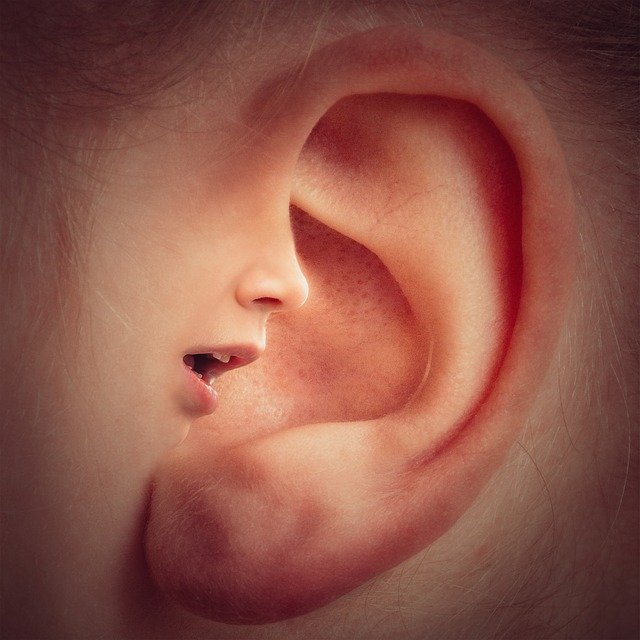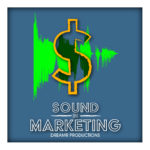Sound is universally understood and can help drive marketing effectively and efficiently.
Humans tend to use the same sounds or avoid certain sounds in languages all over the world. These are called sound symbolism patterns. According to a study done by the Proceedings of the National Academy of Sciences, word lists were analyzed over nearly two thirds of the world’s languages. Researchers found that a considerable amount of 100 basic vocabulary items associate strongly with specific kinds of human speech sounds. These are from unrelated languages that often use or avoid the same sounds.
According to Morten H. Christiansen, professor of psychology and director of Cornell’s Cognitive Neuroscience lab, “These sound symbolic patterns show up again and again across the world, independent of the geographical dispersal of humans and independent of language lineage.”
Sound goes beyond language.
Without speech and apparently without connection, the world is similar in its communication foundations.
Before Life, There Was Sound
In a huge experiment, scientists asked hundreds of English speakers all over the world to listen to different genres of music from non-Western cultures. The results were that those listeners quickly distinguished lullabies and dance songs. Granted this is a survey from English speakers only but the article states that they will be conducting the experiment next with non-english speaking participants. There was also another online test done that included both US and Indian participants.

A theory put forward is that the origin of, “…lullabies may have evolved from parent-offspring interactions.”
Before language skills are built, offspring can communicate with the world in the form of song.
This just goes to prove that music and sound is inherently encased in us. It’s one of the first things we are cognitive of at the beginning of our existence. In utero, we hear and feel our mothers’ heartbeat and voice. We come out knowing who she is.
That is powerful!
This is all subjective and even this study said that they couldn’t prove music as a “universal language” per se. But what I do believe is that it proves that sound and music can get your gist across.
It’s like sitting at a table with a French speaking person and being able to recall your 2 years of high school french. You won’t be able to delve into a huge conversation on the meaning of life, the universe and everything (42), but you’ll at least be able to say “hello” and “my name is”. “Bonjour” and “je m’appelle”.
Streaming Statistics
Mindshare released a report in early 2019 with streaming statistics through platforms such as Spotify. A lot of fascinating information but something in particular I wanted to share.

“55% (of listeners) listen to music streaming services weekly” (According to Mindreader Wave 9, 2019. This data was taken over 47 markets globally). “55% agree that streaming music is helping them expand their musical knowledge and explore other genres” (According to Mindshare, Music Listening Attitudes and Consumption Formats (Mexico, India, US, China and UK), 2019). “In the music streaming segment, the number of users is expected to reach 978.1 million by 2023” (According to Statista, November 018, Digital Market Outlook).
“In 2018, the streaming revenue accounted for almost half (47%) of global revenue, driven by a 32.9% increase in paid subscription streaming. Last year represented the fourth consecutive year of growth” (According to the Global Music Report 2019).
Streaming is how people discover new music. It is how they curate their tastes and preferences.
The 19.1 billion dollar global music market spends a majority of their time on streaming platforms and they want someone else to curate their content.
How Does Music Apply To Marketing?
You’re probably still wondering why I bring this up in regards to marketing. So let me give you an example.
You’re a college kid. You’ve been studying all week for finals. You’ve just stepped out of the classroom of your last final and it is summertime. You’re feeling good, accomplished, and ready to go for a celebratory drive.
You grab your phone and go on Spotify. You type “school’s out” into the search bar. The first thing that pops up is a playlist called “School’s Out”. You hit play, jump in your car, roll down the windows and go cruising. There may be a track on there that you don’t care for but for the moment it doesn’t matter; you’re driving anyways. 30 minutes or so go by and an ad pops up (you don’t have a paid subscription). It’s for Baskin’ Robbins. “Well, what do you know, there’s a Baskin’ Robbins right around the corner. What a great treat to start off summer. I think I’ll go there.”
And there you have it. Baskin’ Robbins just pulled you in….easily. This could have also been effective if you’d seen a billboard for ice cream but the hundred other people that drove by that billboard may not have cared or been in the same mood as you were.

That playlist was curated for your demographic and, I could be wrong about this but, targeting your location. I would imagine that those advertisements have a huge success rate when targeted that niche.
And here’s the other thing. You’re listening to the playlist and a song pops up that you don’t know (which is bound to happen). You go with it. It fits the mood and you’re happy. Now, subconsciously, you’ve created a happy memory that will live on in you for a long time and Baskin’ Robbins is now a part of that happy memory.
Baskin’ Robbins is now part of a happy memory.
Cari Kesten, Global Agency Associate Director at Spotify said it perfectly.
“We all remember the first time we discovered our favorite band, and the excitement we felt sharing it with others. How can your brand tap into discovery to build that level of connection with your consumer?”
Carl Kesten
We are in an age of a fully immersive audio experience and we’re enjoying it.
According to Statista from Digital Market Outlook, “In the music streaming segment, the number of users is expected to reach 978.1 million by 2023”. It’s time to experiment and see how your brand can be a player in this. That’s a huge audience to get to know.
Ways To Advertise Through Streaming
Spotify’s Beta Ad Studio. For a minimum ad spend of $250, they’ll work with you on coming up with a creative ad that, ideally, reaches your target audience.
Pandora For Brands. I couldn’t find pricing for this one but they have a contact form that you can email them questions. I would imagine they do custom pricing depending on budget and business size.
Pandora also has a podcast about the power of sound and as far as I can tell Pandora, Veritonic, and myself are the only ones honing in on this….I find that a bit strange but there you have it.
I’m highly curious about both Spotify and Pandora so if you go that route, let me know your experiences. I’d love to share the results too to help others bridge that gap. It’s such a new landscape out there. We need to help each other out.
In Conclusion
Sound is powerful and very much relevant. If we are able to harness this subconscious (at present) form of communication into a consciously thought out marketing strategy, our reach and response through our brand marketing could be astronomically heightened.


